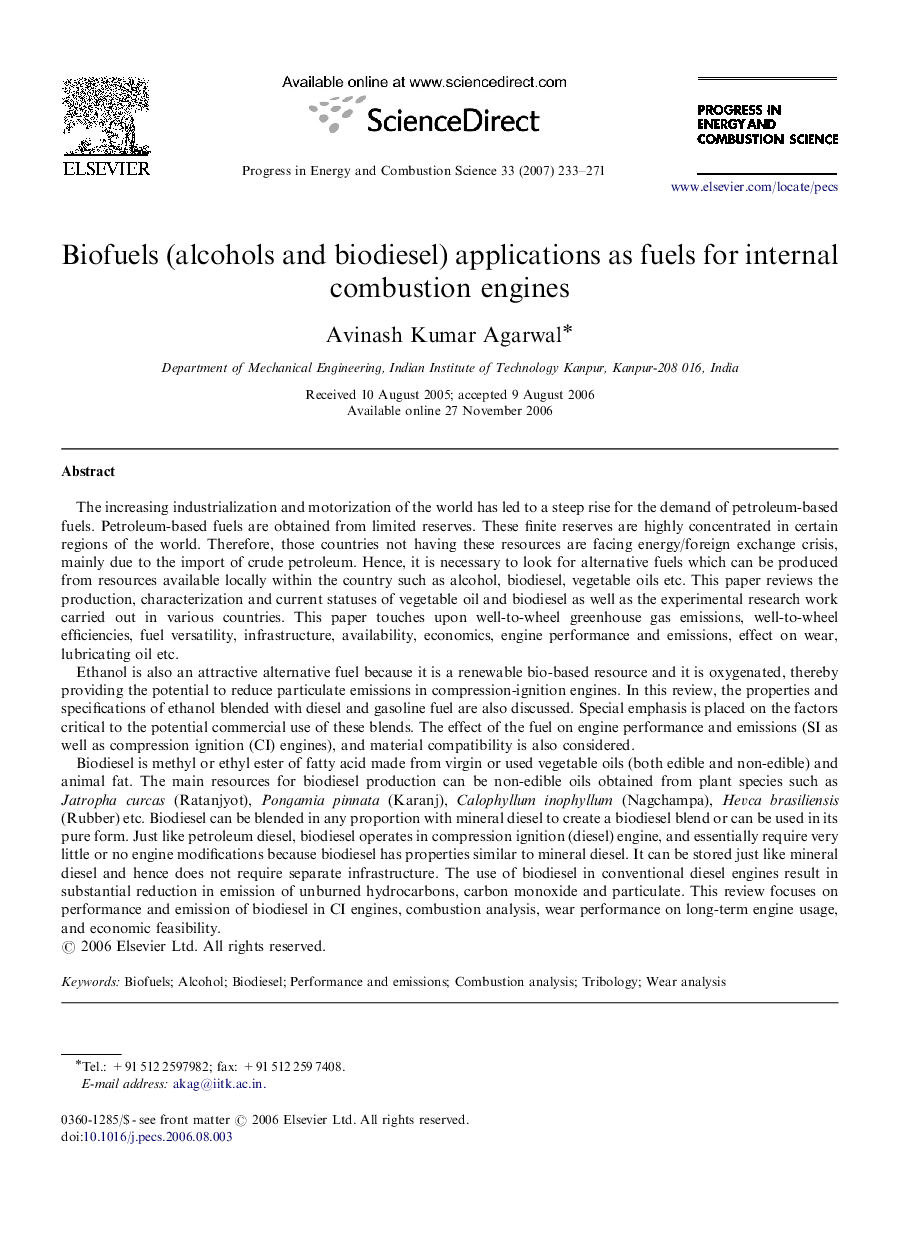| Article ID | Journal | Published Year | Pages | File Type |
|---|---|---|---|---|
| 241846 | Progress in Energy and Combustion Science | 2007 | 39 Pages |
The increasing industrialization and motorization of the world has led to a steep rise for the demand of petroleum-based fuels. Petroleum-based fuels are obtained from limited reserves. These finite reserves are highly concentrated in certain regions of the world. Therefore, those countries not having these resources are facing energy/foreign exchange crisis, mainly due to the import of crude petroleum. Hence, it is necessary to look for alternative fuels which can be produced from resources available locally within the country such as alcohol, biodiesel, vegetable oils etc. This paper reviews the production, characterization and current statuses of vegetable oil and biodiesel as well as the experimental research work carried out in various countries. This paper touches upon well-to-wheel greenhouse gas emissions, well-to-wheel efficiencies, fuel versatility, infrastructure, availability, economics, engine performance and emissions, effect on wear, lubricating oil etc.Ethanol is also an attractive alternative fuel because it is a renewable bio-based resource and it is oxygenated, thereby providing the potential to reduce particulate emissions in compression-ignition engines. In this review, the properties and specifications of ethanol blended with diesel and gasoline fuel are also discussed. Special emphasis is placed on the factors critical to the potential commercial use of these blends. The effect of the fuel on engine performance and emissions (SI as well as compression ignition (CI) engines), and material compatibility is also considered.Biodiesel is methyl or ethyl ester of fatty acid made from virgin or used vegetable oils (both edible and non-edible) and animal fat. The main resources for biodiesel production can be non-edible oils obtained from plant species such as Jatropha curcas (Ratanjyot), Pongamia pinnata (Karanj), Calophyllum inophyllum (Nagchampa), Hevca brasiliensis (Rubber) etc. Biodiesel can be blended in any proportion with mineral diesel to create a biodiesel blend or can be used in its pure form. Just like petroleum diesel, biodiesel operates in compression ignition (diesel) engine, and essentially require very little or no engine modifications because biodiesel has properties similar to mineral diesel. It can be stored just like mineral diesel and hence does not require separate infrastructure. The use of biodiesel in conventional diesel engines result in substantial reduction in emission of unburned hydrocarbons, carbon monoxide and particulate. This review focuses on performance and emission of biodiesel in CI engines, combustion analysis, wear performance on long-term engine usage, and economic feasibility.
